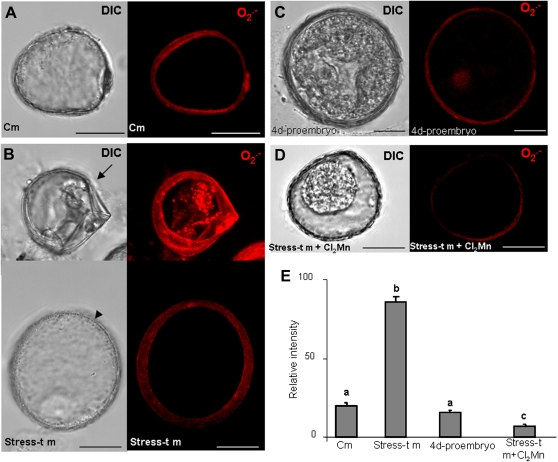Fig. 6.
Imaging of O2.− production in barley microspore cultures with a dihydroethidium (DHE)-specific probe and confocal analysis. (A–D) Micrographs showing the differential interference contrast microscopy (DIC) image and the O2.− -dependent DHE fluorescence in red (maximum projection of several optical sections): (A) control microspore with no signal for O2.− ; (B) stress-treated microspores: in the upper image, a small cell with contracted cytoplasm, typically a non-embryogenic cell (arrow), with high O2.− fluorescence; in the lower image, a bigger rounded cell, typically an embryogenic microspore (arrowhead), with no O2.− signal; (C) 4-day pro-embryo, negative to O2.− fluorescence; (D) negative control in stress-treated microspores after incubation with Cl2Mn (O2.− scavenger); bars, 15 μm. (E) Histogram showing the relative fluorescence intensities of control microspores (Cm) and the three stages illustrated in the micrographs. Stress-t m, stress-treated microspores. Letters indicate significant differences at P < 0.05 according to Duncan’s multiple-range test. (This figure is available in colour at JXB online.)

